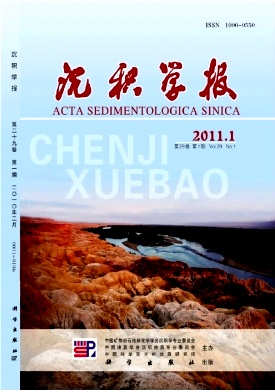Characteristics of Biomarker and Its Implications of Deep Source Rocks from Northern Dongying Depression
- Received Date: 1900-01-01
- Rev Recd Date: 1900-01-01
- Publish Date: 2011-02-10
-
Key words:
- biomarker
Abstract: 16 mudstone samples from wells of F8, Fs1 and Fs2 in Minfeng area of Dongying depression were selected for understanding the origin and the preservation of the organic matter and their significances. By the application of organic analysis including: total organic carbon content, extraction of soluble organic matter, group composition of soluble organic matter and GCMS of saturated hydrocarbon, the abundance, type and the maturity of the organic matter were studied.
〓〓The formation with the depth from 3 000 m to 5 000 m was divided into three units considering the existence of the gypsumsalt rock: the upper layer of the gypsumsalt rock, the gypsum layer and the lower layer of the gypsumsalt rock. There are great variations of the abundance of organic matter between each unit. The upper layer is much higher than others, so as to the content of chloroform bitumen "A". Both the TOC and the chloroform bitumen "A" of the gypsum layer are lower than the upper layer. The lower layer of the gypsumsalt rock is the lowest in chloroform bitumen "A", although one sample from F8 well has the TOC as high as 2.29%.
The group composition of the soluble organic matter shows that: in three members of source rocks, the type of organic matter of gypsum layer is the best, and the upper layer of the gypsumsalt rock followed, at last is the lower layer of the gypsumsalt rock. Analysis of the gammacerane index and the ratio of Pr/Ph indicate that the upper layer of the gypsumsalt rock and the gypsum layer have similar sedimentary environment which is reducing deep lacustrine deposional environment under semihumid climate conditions, and the salinity of the lake is normal in Dongying depression with fresh to brackish water. However, the depositional environment of gypsum layer is quite different for that is strong reducing saline lacustrine facies under semiarid climate conditions with high salinity. The climate condition of the upper layer of the gypsumsalt rock is relatively more humid and huge amounts of terrestrial organic matter come into the lacustrine basin with surface runoff. As a result, the source of the sedimentary organic matter is lower hydrobiont, lacustrine algae and terrestrial organic matter transported by the river. As the climate conditions get more aridity, the input of terrestrial organic matter decease due to the river discharge reduced. Meanwhile, the salinity of the lake get stronger because of the degree of drought is pricked up gradually, but many species of halophilic bacteria and variety kinds of algae adapted to the hypersaline environment growth rapidly. Therefore, the organic matter of the gypsum layer is mainly originated from lower hydrobiont and algae, which is supported mainly from the dominance of the isoprenoid to the normal alkanes. Because of the existence of the gypsumsalt rock, the difference of maturity of organic matter is significant from routine variation, which performance as the maturity of the gypsum layer is lower than both the upper and the lower layers.
〓〓The biomarker parameters of the crude oil from northern Dongying depression were collected to make sure the source of the oil had been exploited. According to the data, the crude oil can be separated into two species, one with high Pr/Ph ratio and low Pr/nC17 and Ph/nC18 ratios, the other with low Pr/Ph ratio while high Pr/nC17 and Ph/nC18 ratios, and the latter is distributed broadly in this area. The comparison of the biomarker parameters between the source rocks and the crud oil indicated that the former kind of crude oil probably derived from the upper layer of the gypsumsalt rock, and the latter kind of crude oil might be derived from the gypsum layer.
Furthermore, the existence of the thick gypsumsalt rock explained the extensive distribution of the latter type.
In conclusion, the gypsumsalt rock from Dongying depression has great hydrocarbon generation potential. The crude oil exploited in this area may be mainly generated from the upper layer of the gypsumsalt rock and the gypsum layer, and the latter is dominated.
| Citation: | DING Fei. Characteristics of Biomarker and Its Implications of Deep Source Rocks from Northern Dongying Depression[J]. Acta Sedimentologica Sinica, 2011, 29(1): 192-198. |






 DownLoad:
DownLoad: